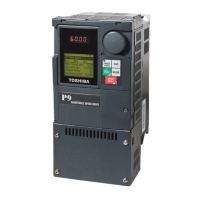12 P9 ASD Installation and Operation Manual
Load-Produced Negative Torque
When the P9 ASD is used with a load that produces negative torque (an overhauling load), the over-
voltage or over-current protective functions of the P9 ASD may cause nuisance tripping.
To minimize the undesirable effects of negative torque, the dynamic braking system may be used. The
dynamic braking system converts the regenerated energy into heat that is dissipated using a braking
resistor. The braking resistor must be suitably matched to the load. Dynamic braking is very effective in
reducing the DC bus voltage during a momentary over-voltage condition.
If the dynamic braking system or a component of this system were to fail under extreme conditions, the
dynamic braking resistor may experience an extended over-current condition. The DBR circuit was
designed to dissipate excessive amounts of heat and if the extended over-current condition were allowed
to exceed the circuit parameters, this condition could result in a fire hazard.
To combat this condition, the 3-phase input may be connected using contactors that are configured to open
in the event of an extended DBR over-current condition or an internal circuit failure. Using a thermal
sensor and/or overload protection as the 3-phase input contactor drive signal, the contactors will open and
remove the 3-phase input power in the event of an extended DBR over-current or system over-voltage
condition. See Dynamic Braking Protection on pg. 280 for more information on using dynamic braking
with the P9 ASD.
Motor Braking
The motor may continue to rotate and coast to a stop after being shut off due to the inertia of the load. If an
immediate stop is required, a braking system should be used. The two most common types of motor
braking systems used with the P9 ASD are DC Injection Braking and Dynamic Braking.
For further information on braking systems, see DC Injection Braking on pg. 125 and Dynamic Braking
on pg. 137.

